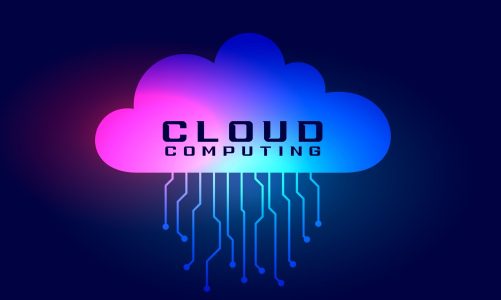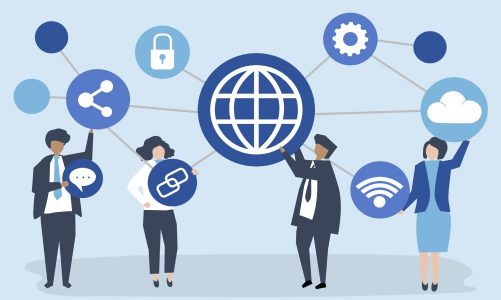Table of Contents
Doctors are increasingly positive about the adoption of digital technologies and believe that in less than 5 years we will have a fully digital healthcare system
Smart Healthcare’s health that builds and capitalizes on all the technologies that fall under the hair of Industry 4.0: Artificial Intelligence, Big Data Analytics, Internet of Things, augmented reality and virtual reality, robotics, 3D printing, and robotic systems together with concerning real-time optimize High-performance mobile connectivity (5G) and pervasive use of the cloud in all its forms.
Digital progress does not only concern systems and tools but also a new way of managing infrastructures, applications, and services by relying on a series of technological partners for the creation of innovative solutions and the management and maintenance of machines and programs. , including security management.
Evolution Of Digital Healthcare
Digitization in healthcare manifests itself in various areas: in structures, for example, it involves clinical-health processes (hence the Electronic Medical Record and important investments in departmental systems), but also digital services for citizens (totems, reservation, queue elimination ) and the integration systems with the territory such as television, teleconsultation, telemonitoring and telesurgery, which contribute to a real redefinition of the system aimed at guaranteeing sustainability and increasingly satisfying assistance and care paths for the patient.
Telemedicine And The Internet Of Things
The use of sensors and SIMs integrated into various equipment such as, for example, sphygmomanometers, pulse oximeters, scales, thermometers as well as electrocardiographs allow you to certificate many clinical procedures.
The telemedicine platforms based on IoT provide medical personnel with a timely picture of the outcome of the measurements and, where required, activate alerts in the event of non-compliance with the therapeutic diagnostic plan defined by the specialist. Smart appliances transmit the acquired data to a gateway.
Which will autonomously transfer them to the telemedicine software platform through a special app pre-installed in the gateway itself. The service is generally supported by a dedicated contact center that deals with contacting patients and involving the specialist doctor in case of need.
Mobile Technologies And Sensors To Support Clinical Remote Experimentation
The IoT, in addition to its use in prevention and therapy situations, is used in clinical trials, especially in the areas of the treatment of diabetes, cardiovascular disease, and sleep disorders. According to the Digital Innovation in Health Observatory of the Polytechnic di Milano, 76% of patients like this method of participation via the mobile channel. The availability of a device that connects the patient recruited in the study to the team of professionals (doctors, engineers, pharmacists, ) involved allows to:
Concerning Sale, Optimize High To Support Telemedicine
The National Health System (SNN) recognizes 3 ways in which the relationship between doctor-patient and concerning real optimized high aged remotely.
1. Television
Distant doctor-patient interaction. It requires the possibility of audio and video interaction at a good resolution, availability of transmission band in sufficient quantity, and a set of devices for the detection of vital signs.
2. Teleconsultation
Remote interaction between several doctors who communicate with each other to consult concerning a clinical case. It can take place in asynchronous mode or in real-time, and depending on the mode it may require the possibility of audio and video interaction or only file sharing.
3. Telemonitoring
Remote acquisition of the main vital parameters (heart rate, body temperature, blood pressure, and so on) through digital devices which are then transmitted to a platform that makes them available to both the subject himself and the treating physician.
The new Guidelines prepared by the Ministry of Health and approved by the State Regions Conference in December 2020 represent a turning point for the entry of telemedicine into the National Health Service (SSN), but there is still a long way to go for a complete implementation of this additional patient assistance tool.
The Guidelines underline how, to guarantee the effective performance of a remote service, technological tools are necessary that allow medical personnel and citizens to communicate in a safe safely and effectively, for example, a functioning connection network between doctors and patients is required, a web portal that doctors access with their account for patient management and digital tools such as computers, tablets or smartphones but also surveillance cameras for observation of newly operated patients or chronically ill patients.
Furthermore, the Guidelines emphasize that it is essential that all data transfers (in the form of videos, images, files, and so on) are encrypted and in line with the regulations on privacy and security (a requirement set among the conditions of an authorization, accreditation, and contractualization for the provision of telemedicine services at the expense of the NHS).
However, details on how to ensure these requirements are lacking. There is a lack of more detailed information on the data management processes (from the collection, to transfer, to archiving) and on the specific quality standards relating to the IT infrastructure and the necessary certification requirements.
The absence of indications in this sense can create a situation of non-homogeneity in the quality of the services offered between Regions or even between individual health facilities within the same Regions. More detailed rules would therefore be desirable to define the quality standards of these communication tools throughout the national territory.
For example, the AGID (the Agency for Digital ) has outlined a qualification path for software as a service (SaaS) suppliers of the public administration, so that public administrations can adopt homogeneous and quality cloud services, developed and supplied according to minimum reliability and security criteria considered necessary for public digital services.
Similar systems could be envisaged for the certification of infrastructures dedicated to telemedicine. Digital information, however, is an indispensable and indissoluble element to be able to create advanced models of hospital care management, extend them to the territory,
The Cloud In Healthcare
The creation of a robust and resilient technological infrastructure, with high reliability thanks to High Availability architectures and advanced Disaster Recovery systems, capable of providing unified communication services (voice and data) between any kind of equipment, including clinical / electro-medical ones, finds a strategic ally in Cloud Computing.
To optimize the consolidation of technology, healthcare institutions have begun to open up to the cloud not only to solve health data storage problems but also to manage infrastructures and applications in As a Service model. Added to this is the growing use of IoT applications and increasingly massive use of Artificial Intelligence are pushing Healthcare towards edge computing.
The cloud, in addition to guaranteeing maximum scalability and functional agility, outsources and resolves all maintenance and updating costs, allowing to channel the expense only on obtaining the desired service according to the supply needs.
Also Read: Google Also Became a Dermatologist Thanks To Artificial Intelligence – It Can Recognize 288 Diseases



